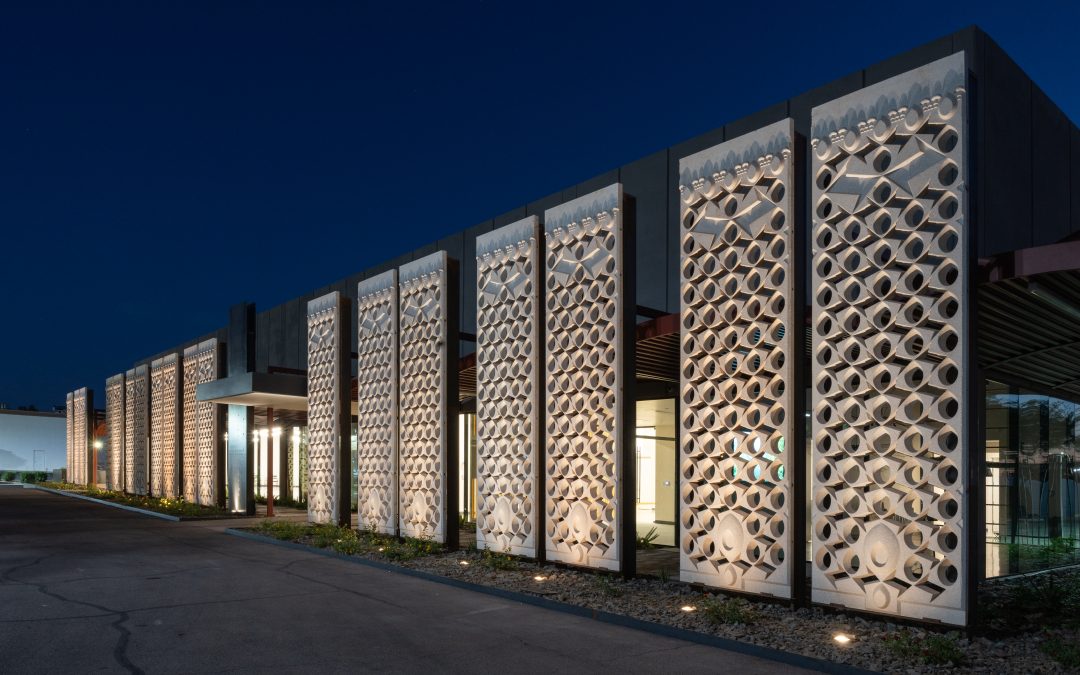Makers
In Phoenix, The Guild takes fabrication, logistics and design to another level.
By Nora Burba Trulsson
It would be easy to characterize The Guild as a custom furniture company, given its curated line of tables and benches, handcrafted of wood and steel. However, that barely scratches the surface of what the six-person team does. “We are makers, first and foremost,” says Mikhail Gladchenko, The Guild’s production manager. “But we are also collaborators, and we marry digital technology to handwork.” Specializing in fabrication, The Guild was founded under the umbrella of 180 Degrees, the design-build firm helmed by architects James Trahan, John Anderson and Troy Vincent. “We’ve always done some fabrication since we founded our company in 2001,” explains Trahan. “For example, John and I built the stairs in one of the first houses we did, but The Guild takes it to another level.”
As its own entity, The Guild was launched several years ago, and its shop takes up about half of 180 Degrees’ 6,000-square-foot, 1940s brick building in the Melrose Neighborhood of Phoenix. Along with Gladchenko, The Guild includes Evan Emery, Casey Fowler, Jesus Carrillo, Rick Wolf and Jose Flores, Sr., all of whom came to The Guild after collaborating with 180 Degrees on various projects when they worked for other companies. Specializing in woodworking, metal work and concrete, The Guild handles 180 Degrees projects, including helping with the renovation details of the studio, with touches like forming the cast concrete entry wall, cladding the bathroom core in steel and crafting the conference room table and reception desk. They also do projects for other architects and interior designers, with names like John Kane of Architekton, Kaitlyn Wolf, Elizabeth Rosensteel, David Hovey and Gensler turning to the group for help with project elements.
“Really, what we do is solve things,” explains Emery, pointing out a recent collaboration on hardscape elements with The Green Room landscape architects, who designed several elliptical elements—including a fire pit and a spa—meant to invoke the form of a football stadium, for a football player’s backyard. “The Green Room consulted with us on the project,” says Gladchenko. “A 3-D printing company fabricated the concrete for the fire pit, but nobody really knew how to install the pieces. We learned and figured out how to do this—that’s where we thrive.” The Guild also crafted the formwork for the cast-in-place spa.
Figuring things out has led The Guild to numerous interesting projects in the past few years. There were custom bookshelves for The Scottsdale Artists School and a wood tabletop topo map for a developer. For Gensler’s new Phoenix offices at The Esplanade, 180 Degrees served as builder and The Guild fabricated the signature red screen visible from Camelback Road. For Swaback Partners’ architect Jon Bernhard, the team did the jewel-like glass stairs that float to the second floor in a Sedona residence. At Tempe Center for the Arts, The Guild fabricated Mayme Kratz and Mark Ryan’s concrete public art piece.
The Guild has dipped into history, making the metal gate structure and formwork for desert masonry walls at Taliesin West’s roadway entry. With 180 Degrees serving as the contractor, the team supervised volunteers who built the walls, echoing the signature building technique of cement and native rocks developed by Frank Lloyd Wright and his Fellowship in the 1930s.
The Guild also salvaged 100 large precast concrete panels from an APS building in Phoenix and repurposed them in a Chandler project, as well as refurbishing stained glass panels at Kiva Craft Center in downtown Scottsdale under the direction of architect Douglas Sydnor. “Our expertise is not stained glass,” Emery points out, “but it is patience. We learned how to do the work.”
The Guild and 180 Degrees are also involved with updates to a local home largely regarded as one of architect Will Bruder’s masterpieces, the angular Byrne residence. There’s a new steel trellis being installed as well as a new above-ground pool. “For the formwork on the pool, we referenced the pattern design of Louis Kahn’s Salk Institute,” says Trahan. “It’s a little joke to Will about master architects.” Within The Guild’s busy shop, there’s a constant hum of activity. “As architects and designers, we know when to step out and let them do what they do best,” Trahan says. “The Guild team goes with it, and nobody second guesses them.” Says Gladchenko, “Our furniture line is just part of the story. While sometimes we work on projects in isolation, we know we are part of a larger story.”

